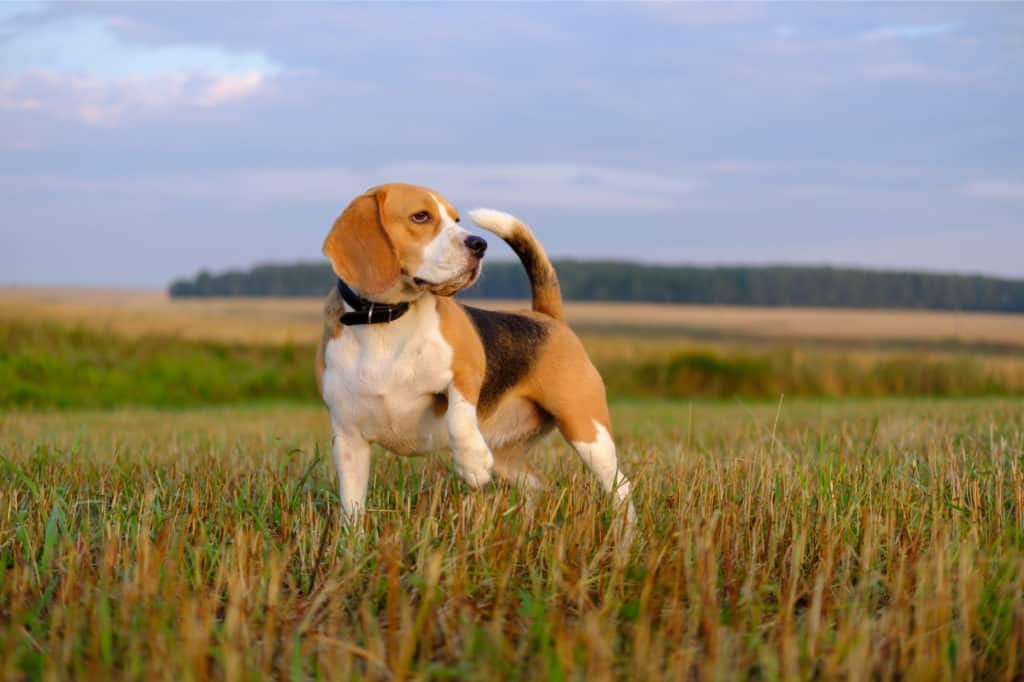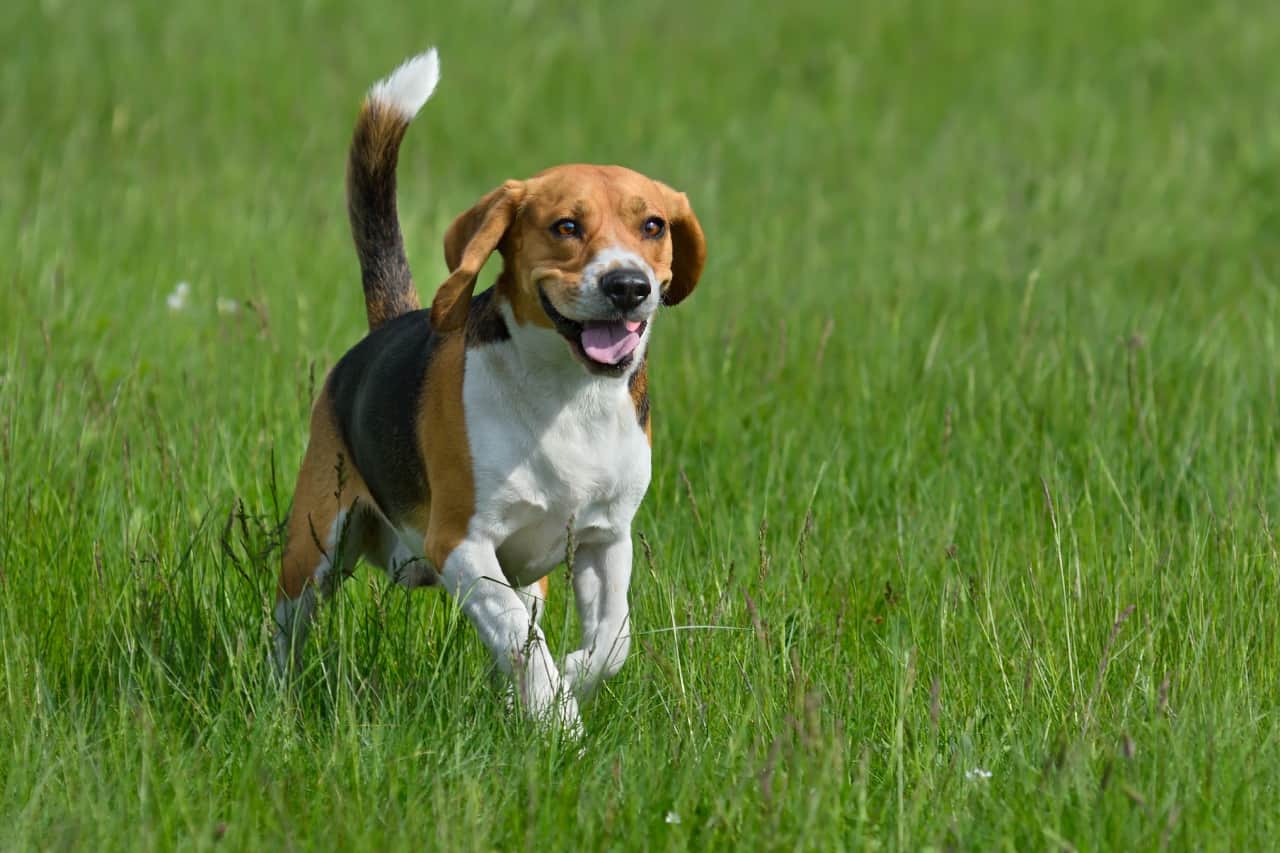When you say the name Beagle, images of large dog packs hunting rabbits or chasing foxes come to mind. The tri-color alert dogs with their upright tails are renowned for beagling or hare hunting but not so much as an upland dog for bird hunting. Had it ever crossed your mind to use a Beagle as a bird dog? Can a Beagle be a bird dog?
A Beagle can be a bird dog. Although not conventionally known or used as an upland dog, Beagles have a proven track record as an excellent bird dog; They can easily be trained to find and flush out birds, foxes, hares, or rabbits.
Beagles are essentially used in hunting as a scent hound. This unique ability sees the breed used in the field and the agricultural sector across the world. In the quarantine storage sections, they sniff out prohibited goods being imported into countries illegally. Let us explore the reasons why the Beagle can be a bird dog.
The Conventional Beagle
This beautiful tri-color coated hound has a slightly obscure past. It is not exactly sure how the breed came about. It has been documented that William the Conqueror brought The St. Hubert Hound and the Talbot Hound to Britain in the 11th century. From there, Queen Elizabeth l kept dogs she called Pocket Beagles. Beagle is a term for a hound dog. Beagling is a term for what they do best – finding hare and rabbit.
Some centuries later, a Reverend by the name of Phillip Honeywood developed a pack of Beagles, and his dogs formed the basis of the Beagle we know today. These Beagles were trained and concentrated on fox and hare hunting. Only by 1840 was a more uniform dog developed out of the many variants.
The real Beagle began taking shape when in late 1840, General Richard Rowett imported several Beagles to Illinois and started breeding the dogs for form and functionality. Gen. Rowett’s Beagles became the AKC standard for the breed in 1885. To think a hound dog can become a good bird dog might sound impossible. Birding is where the Beagle could excel.
Beagling – What A Beagle Does Best
Given the title of hound, the Beagle is an expert in the scent division. Considered one of the top three scent hounds in the dog world, the Beagle is a favorite in the field. Usually, pack hunters can track a hare or rabbit’s scent, and because they hunt so near together, they rarely lose the scent.
Beagles have a lot of stamina and can maintain a good pace. They do not have the speed to their advantage, so they cannot easily catch a speeding hare; they will, however, pick up the shot game and retrieve it back to the hunter. Usually hunted in packs of up to 40 and marshaled by one Huntsman and several whippers-in who keep stray dogs in the group. As the enthusiasm for fox hunting waned and became illegal, beagling came to an end to a large degree.
The focus on pheasant hunting instead of a fox, deer, or just hares is what saved the Beagles from becoming obsolete as an upland dog. Their keen sense of smell, able to detect an almost scentless hare, was put to fair use in hunting birds. They started getting trained not to ignore the scent of the birds but to flush them out instead.
What Your Beagle Can Do When Hunting Birds
Some trainers believe in the science of training a bird dog, but with the Beagle, there seems to be such a natural drive to hunt; all you have to do is point him in the right direction. Below are some tips on training your Beagle to hunt birds’
- Train in the field. Beagles are best trained while they are in the area where the game is. They are brilliant, and not much correction is needed.
- Introduce dead birds. Letting your Beagle smell a freshly shot game bird such as a pheasant or grouse will put him onto the scent.
- Flushing. As the Beagle is usually a runner, they will learn to flush more quickly when put to areas where there are more birds than possible rabbits.
- Keeping close. When you are hunting birds, you want to have your dog close to the gun. If your Beagle is on the birds, he will maintain a closer range.
- Retrieving. Although the Beagle is not primarily used as a retriever, this is a skill they can be trained to perform with some patience.
- Keeping quiet. On a bird hunt, you want silence for the most part. The Beagle, for the most part, is a calm hound; birds get flushed and shot rather quickly, so there is no reason for the dog to have to “give tongue” or bay once it has cornered the prey.
- Being stubborn. The Beagle can be determined and headstrong. With repetition, patience, and reward-based training, you can overcome the dog’s desire to do things his way. Training in the field will allow you to assess and assist your dog in improving continually.
Using a dog that is typically a running hound for birds can be done; however, it is not the norm. They are excellent at tracking and finding game, flushing and running hare, rabbit, or raccoon, and usually, they will kill what they have cornered. This trait can be difficult in a controlled environment.

What Your Beagle Will Not Do As A Bird Dog
Considering that your Beagle is a highly skilled scent hound, bred for finding and then running down the small and medium-sized game when putting your Beagle onto birds, there are a few things the Beagle will not excel in.
The reason for that is not due to the dog’s unwillingness, but rather specific characteristics that have shaped the Beagle. They are bred for running after hare and rabbit and will go into any thicket or shrubbery to flush out the game.
The Beagle is such an excitable dog in the field, they are happiest when working, and when tracking, their white-tipped tails are wagging eagerly from side to side, which makes them easy to see. Usually, they might start to bay when they get the scent, and the running begins; as a bird dog, these are things your Beagle might not do as a bird dog;
- Stop howling or baying. The Beagle’s instinct as a hound is to bay or bark when it has caught a scent. Baying helps the hunter locate the dogs and prey on the run.
- Work close to the gun. Due to the Beagle being a runner, this might be one challenge that needs a little more training. The dog needs to learn the action is close to the gun for him to remain in your sight.
- Retrieve game. Beagles are not a typical upland dog and usually will not be expected to retrieve shot game back to the hunter. If you have a single Beagle, you might be able to train them to retrieve it; however, they do like to hold on to the game for themselves.
- Swim. Beagles are not too fond of water or swimming; due to their size, Beagles are not suited to do water retrieves and will most probably refuse.
- Never lose a downed bird. As any experienced hunter will know, sometimes you lose the bird, with a Beagle by your side, this is one thing that will never happen to you again. The Beagle will find every bird, every time.
- Ignore other game. While you are in the field concentrating on birding, there is always a chance your Beagle might come across a rabbit, hare, or even a fox scent. Your Beagle will not be able to resist and will run the prey.
Conclusion
There is sufficient evidence that a Beagle can be a bird dog. There is no doubt that it has all the necessary skills like intelligence, stamina, a highly developed sense of smell, and good prey drive to out-hunt the best field dogs out there. While you could train a single Beagle to perform specific bird dog duties for a hunter, in a pack situation, a Beagle is best left to do what they were initially bred for, beagling.

